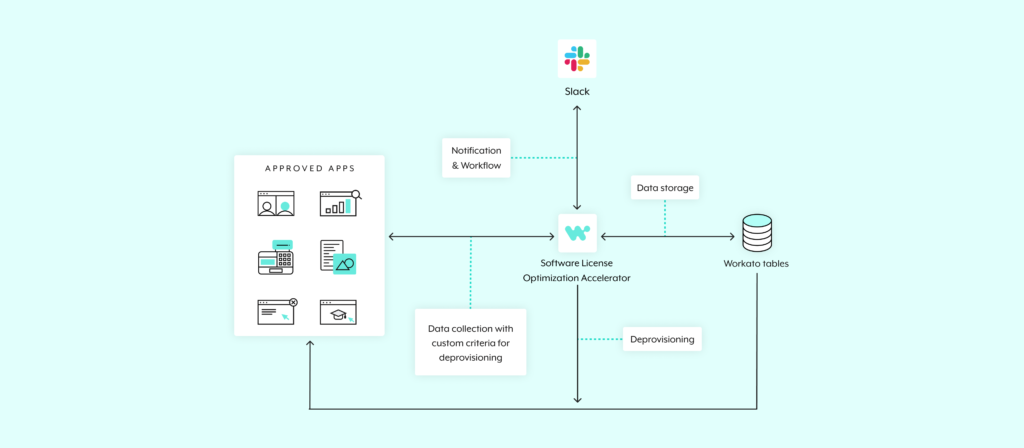Like most high-growth technology companies, we rely on hundreds of SaaS applications to carry out our day-to-day work. Moreover, our teams consistently invest in new applications and move away from others, leading our technology stack to constantly evolve.
Given this complex environment, my team initially struggled to identify the applications certain employees use—and those they don’t. We had to message colleagues just to confirm that they use a given application; where if they don’t, we’d then be forced to deprovision these employees’ licenses manually.
We knew this situation wasn’t scalable. After all, my team was having to spend hours every week on these tedious, mundane tasks instead of focusing on the more strategic, business-critical work that we’re uniquely equipped to take on. In addition, as our technology stack and employee base continued to grow, the issues from the current workflow would only get exacerbated.
These experiences served as inspiration for building a more scalable, cost-effective solution—both for internal use at Workato and for external adoption by other organizations.
We’ve since launched the automation solution as an accelerator* and refer to it as our License Optimization Accelerator.
*The accelerator, like the others we’ve launched, is a pre-packaged, customizable solution that comes with pre-built recipes, instructional guides, solution components, reference data, and more.
While the accelerator is still fairly new, we’ve already been able to use it to transform our license optimization processes—and we’ve seen significant business benefits from doing so. You can read on to learn about how we’ve deployed it internally and the benefits we’ve realized.
How we’ve deployed the accelerator
We started by listing out all the applications in our tech stack, where for each, we tried to answer the following:
- How many days should go by without a user logging into an application in order for their license to be “underutilized”?
- Even if they routinely log into an application, are there other usage behaviors that signify that their license is “underutilized”?
With these answers in mind, we were able to properly configure the applications in the accelerator’s Scheduler (which lets you set up the frequency at which the optimization process runs per application) and Discovery Engine (which, for each application, collects usage data, calculates utilization scores, and creates recommendations to optimize—remove—licenses for users).
The next step involved setting up the Optimization Engine, which encompasses the entire approval workflow for keeping or revoking licenses.
Since our team uses Slack, we use Workbot® for Slack as the user interface for executing this part. We’ve also given the Workbot a playful name (“Firefighter”) and use direct, concise copy within each message Firefighter sends so that the end-user can understand why they’re receiving the notification and the actions they can take.
Here’s how the message looks for users:
And here’s how it looks for approvers:
Note: The accelerator already includes all of the workflow logic around retaining and revoking licenses; all we did was customize the messages Firefighter sends and modify the steps it takes on the backend so that they’re completely in line with our de-provisioning process.
Significant cost savings and a shift in my team’s role
Since using the accelerator, my team no longer has to ask individual employees whether they still need licenses for certain applications, saving us ample time and headache. Moreover, by removing licenses in a way that’s quick and scalable, we’re often able to avoid purchasing additional seats or upgrading a subscription; we can just reallocate seats instead.
While we’ve still only been using the accelerator for a short period of time, we’re already projecting that it’ll provide us with $350,000 in annual savings over the next 2 years—and that comes without any disruption to employee productivity.
Last but not least, the accelerator is helping to reshape my team’s role at Workato. Carter Busse, my manager and our CIO, explains:
I’m thrilled that the accelerator is already delivering so much value to my team and to our organization’s bottom line, but I’m even more excited about the potential benefits it can yield for your business.
If you want to learn more about our License Optimization Accelerator, or any of the others we’ve built, you can reach out to your CSM or to our team at accelerators.feedback@workato.com.
